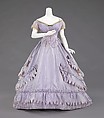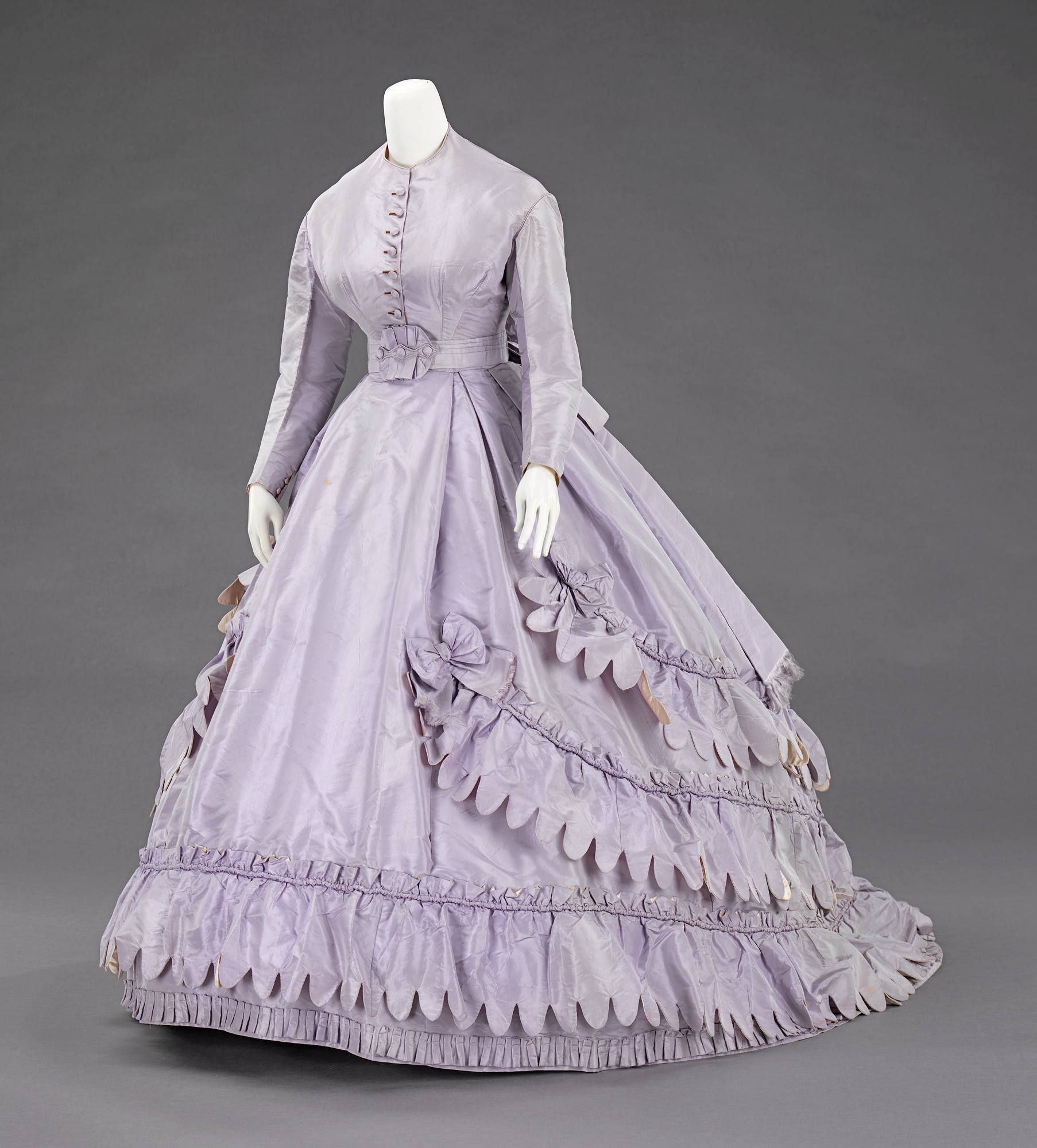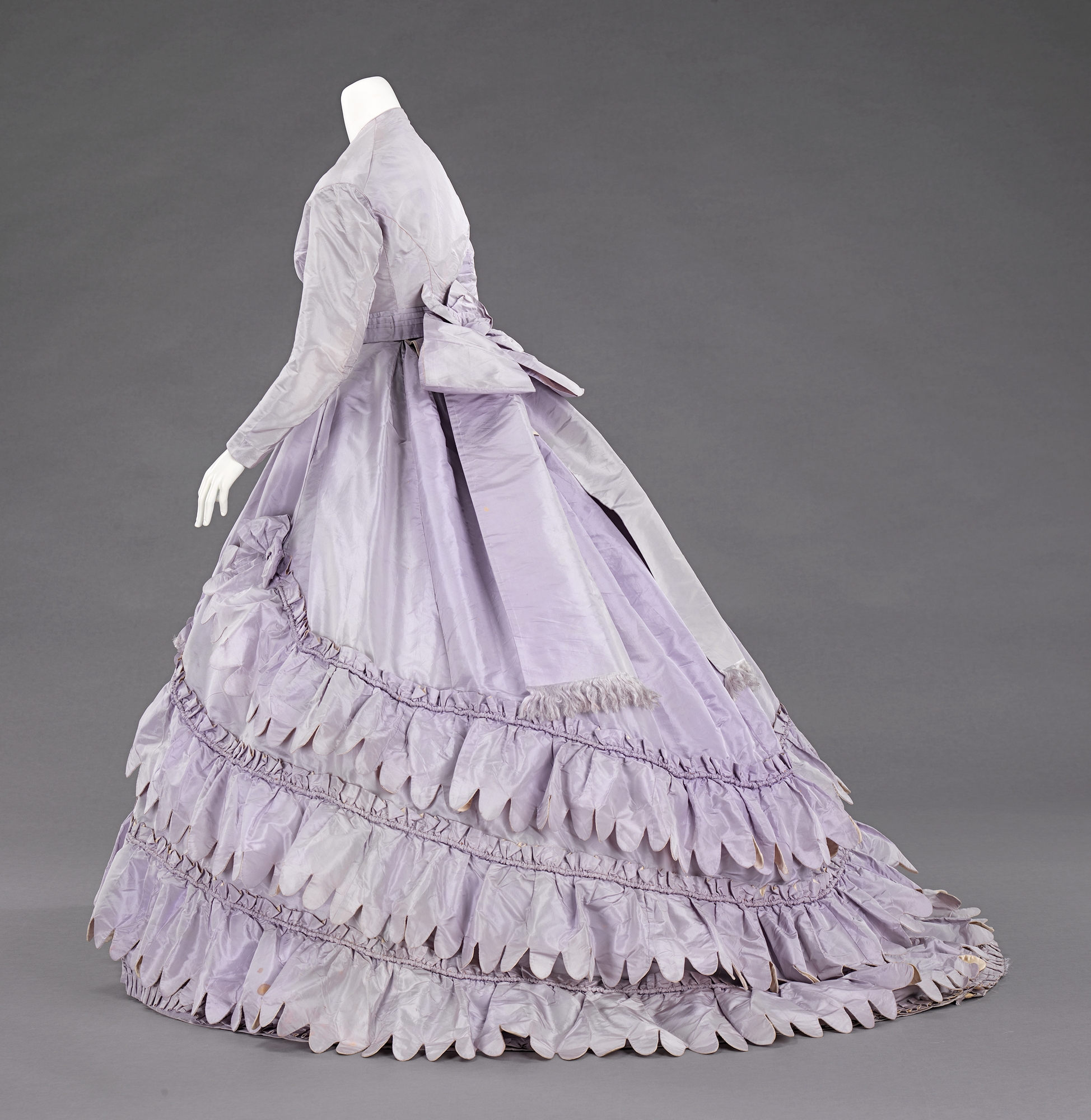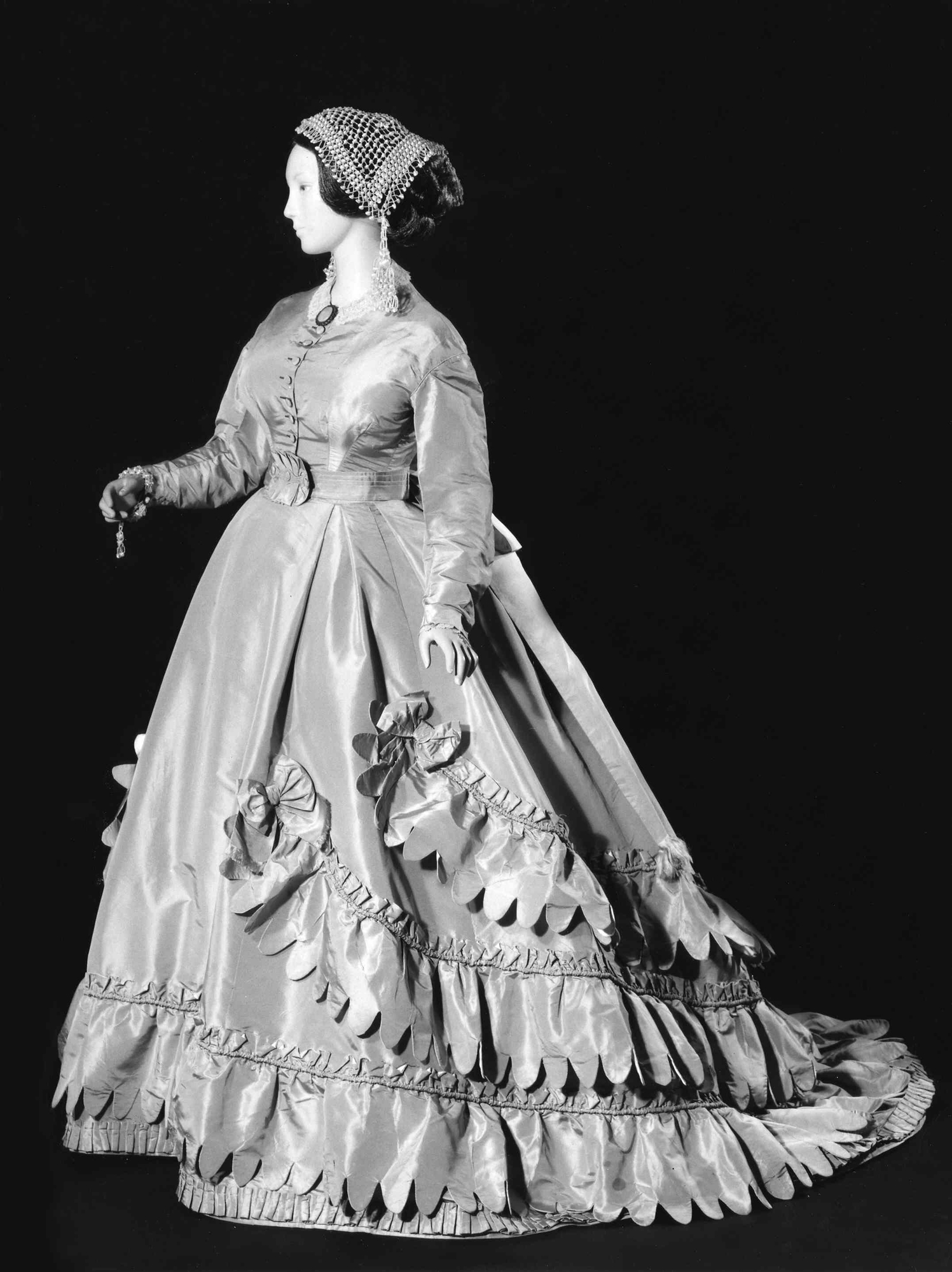Ensemble
Design House Worth and Bobergh
Designer Charles Frederick Worth French, born England
Not on view
The female silhouette of the middle of the 19th century consisted of a fitted corseted bodice and wide full skirts. The conical skirts developed between the 1830s, when the high waist of the Empire silhouette was lowered and the skirts became more bell shaped, to the late 1860s, when the fullness of the skirts were pulled to the back and the bustle developed. The flared skirts of the period gradually increased in size throughout and were supported by a number of methods. Originally support came from multiple layers of petticoats which, due to weight and discomfort, were supplanted by underskirts comprised of graduated hoops made from materials such as baleen, cane and metal. The fashions during this time allowed the textiles to stand out because of the vast surface areas of the skirt and a relatively minimal amount of excess trim.
Charles Frederick Worth was born in England and spent his young adulthood working for textile merchants in London while researching art history at museums. In 1845 he moved to Paris and worked as a salesman and a dressmaker before partnering with Otto Bobergh to open the dressmaking shop, Worth and Bobergh, in 1858. They were soon recognized by royalty and major success followed. In 1870 Worth became the sole proprietor of the business. At his shop, Worth fashioned completed creations which he then showed to clients on live models. Clients could then order their favorites according to their own specifications. This method is the origin of haute couture. Worth designed gowns which were works of art that implemented a perfect play of colors and textures created by meticulously chosen textiles and trims. The sheer volume of the textiles he employed on each dress is testimony to his respect and support of the textile industry. Worth's creative output maintained its standard and popularity throughout his life. The business continued under the direction of his sons, grandsons and great-grandsons through the first half of the twentieth century.
Extant garments by Worth & Bobergh are very rare. This is an example of the elegant simplicity with which Charles Frederick Worth made his reputation.
Due to rights restrictions, this image cannot be enlarged, viewed at full screen, or downloaded.
This artwork is meant to be viewed from right to left. Scroll left to view more.




.JPG)

